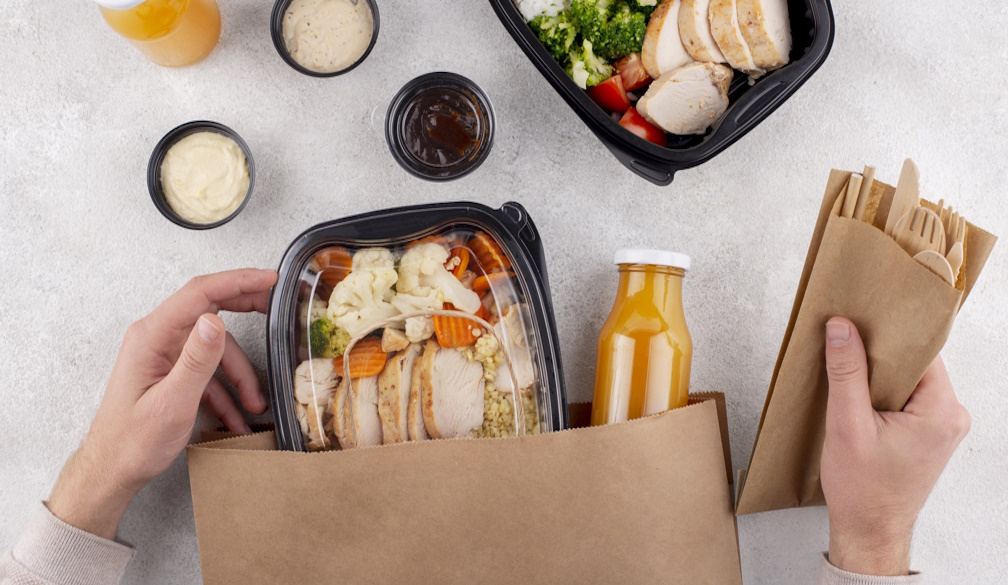Why a Reliable Meal Delivery Service is Changing the Way We Eat

Modern lifestyles are busier than ever. Between work, family commitments, social life, and everything in between, finding the time to plan, shop for, and cook healthy meals daily can be a serious challenge. That’s where a meal delivery service steps in—not just as a time-saver, but as a practical, health-conscious solution to everyday eating. From ready-to-eat gourmet dishes to pre-portioned cooking kits, these services are transforming kitchens across the country.
Understanding the Rise of the Meal Delivery Service
The idea of having food delivered to your door isn’t new, but the evolution of the meal delivery service model has brought a level of convenience and quality that was previously reserved for restaurants. What started as basic takeaway options has now grown into a full-fledged industry offering tailored meal plans, dietary accommodations, and even subscription-based services.
People no longer rely solely on fast food when they’re too tired to cook. Instead, they can choose from a variety of healthy, chef-designed meals that cater to their nutritional goals—whether that’s weight loss, muscle gain, vegetarian living, or simply eating clean without the prep work.
How a Meal Delivery Service Works
A typical meal delivery service offers either ready-to-eat meals or meal kits that come with all ingredients pre-measured and ready to cook. Customers can usually subscribe weekly or purchase meals individually, depending on the provider. The selection process is simple—log into the website or app, pick your meals from a rotating menu, and wait for your delivery.
Some services offer breakfast, lunch, dinner, and snacks, while others specialise in one category. Meals arrive fresh or frozen, typically with cooking instructions or reheating guidelines. The entire system is designed to remove the hassle of shopping and planning, without sacrificing quality or flavour.
Key Benefits of Using a Meal Delivery Service
The primary draw of a meal delivery service is convenience. You save hours each week that would otherwise be spent planning meals, writing grocery lists, shopping, and prepping ingredients. For working professionals, parents, or students, that time can be better spent elsewhere.
Health is another major advantage. Most meal delivery service providers work with nutritionists and chefs to design meals that are balanced and portion-controlled. Whether you need low-carb, high-protein, gluten-free, vegan, or keto meals, there's a provider that aligns with your preferences.
Cost-effectiveness also comes into play. While the upfront price of a meal delivery service might seem higher than home cooking, it often balances out when you factor in the reduced food waste, fewer impulse buys at the grocery store, and no dining-out costs. Plus, it can be a smarter way to stick to a budget if you tend to overspend when shopping without a plan.
Who Can Benefit from a Meal Delivery Service?
Busy individuals and families stand to gain the most from a good meal delivery service. Parents can reduce the daily stress of dinner time, professionals can avoid skipping meals or ordering unhealthy takeout, and students can ensure they’re eating real food even with limited kitchen skills.
But the benefits extend beyond convenience. Elderly individuals or people recovering from surgery may not have the energy or mobility to shop and cook. A meal delivery service can help them stay nourished and independent. Athletes, fitness enthusiasts, and those on specialised diets also appreciate the precise nutritional breakdown many services provide.
Sustainability and the Modern Meal Delivery Service
Many modern meal delivery service providers are aware of their environmental impact and are making changes to align with sustainable practices. From using biodegradable or recyclable packaging to sourcing ingredients locally and seasonally, these companies are working to reduce their carbon footprint.
Meal delivery also naturally limits food waste. By sending only what’s needed for each meal, these services eliminate the half-used produce or bulk items that often get forgotten in the fridge. In the long run, this leads to more efficient consumption patterns and less strain on the environment.
Comparing Different Types of Meal Delivery Service Providers
There are generally two main categories: meal kits and fully prepared meals. Meal kits require a small amount of cooking but give you more control over seasoning and freshness. They’re ideal for people who enjoy cooking but don’t have time to shop or plan. Fully prepared meals, on the other hand, just need to be heated and served—perfect for those who want zero effort but still crave a wholesome meal.
Some companies offer hybrid models with options for both types, while others specialise in specific cuisines or dietary plans. It’s essential to compare menu variety, delivery frequency, ingredient quality, portion sizes, and cost per meal before subscribing.
How to Choose the Right Meal Delivery Service for You
Start by identifying what matters most to you—whether it’s convenience, nutrition, budget, or taste. Review menus, check online reviews, and explore trial boxes that let you test a few meals before committing. Consider how many meals per week you need, if you want breakfast and snacks included, and whether the service aligns with any dietary needs you have.
Also, don’t overlook customer service. A good meal delivery service should be easy to contact, offer flexible scheduling, and make it simple to pause or cancel your subscription.
Conclusion: Eat Well Without the Effort
A high-quality meal delivery service can be a game changer in your daily life. It offers more than just food—it provides time, peace of mind, and a reliable path to healthier eating. Whether you're looking to simplify your weeknights, meet your fitness goals, or simply enjoy chef-quality meals at home, this service is a practical and enjoyable solution.
